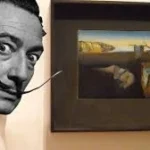
Bartolomeu Dias was the first European explorer to cross the southern tip of Africa and discover the so-called Cape of Good Hope. This discovery made it possible for Europeans to trade with Asia and India over the water and not on land, which was very expensive at that time. Bartolomeu Dias was born in the Algarve, Portugal, in 1451, but little more is known about his early life. His father is said to come from a Portuguese noble family. On October 10, 1487, King John II of Portugal entrusted Bartolomeu Dias with sailing to the southern tip of Africa in the hope of finding a trade route to India.
Bartolomeu Dias was a member of the royal Portuguese court when he was chosen to head the expedition to find the trade route to India.
Dias was probably in his mid- to late 30s in 1486 when João appointed him to head an expedition in search of a sea route to India.
Bartolomeu was also supposed to be searching for a man named Prester John, a supposed Christian King of Ethiopia. The king wished to establish a friendship to enable trade to India.
In August 1487, Dias’ trio of ships departed from the port of Lisbon, Portugal. Dias followed the route of 15th-century Portuguese explorer Diogo Cão, who had followed the coast of Africa as far as present-day Cape Cross, Namibia.
Bartolomeu Dias was the sailing master of the man-of-war (warship) San Christovao.
Dias’ cargo included the standard “padrões,” the limestone markers used to stake Portuguese claims on the continent.
The expedition to the south of Africa began in the summer of 1487 and lasted for 16 months.
Padrões were planted at the shoreline and served as guideposts to previous Portuguese explorations of the coast.
A terrible storm blew Dias’ three ships out to sea and his crew did not spot land for 13 days.
Dias’ expedition party included six Africans who had been brought to Portugal by earlier explorers.
The food supply on the expedition began to run low and the crew convinced Dias to return to Portugal before reaching their destination of India.
Dias dropped off the Africans at different ports along the coastline of Africa with supplies of gold and silver and messages of goodwill from the Portuguese to the Indigenous peoples.
On the return trip Dias’ fleet saw the tip of Africa. They had missed it on the way because of the storm.
Dias named the tip of Africa ‘Cape of Storms’ because of the storm they had encountered when they first sailed past it.
The king of Portugal changed the name to the ‘Cape of Good Hope’ because he believed that its discovery would eventually lead to a route to India via water.
The king was not happy that Dias and his crew had not reached India and that they had not found Prester John.
Dias moved to Guinea until the new king Manuel I hired him to oversee the building of the ships for Vasco de Gama’s upcoming expedition.
Dias supervised the construction of two ships in 1494; both would be part of the first successful voyage to India traveling south around the Cape of Good Hope, led by Vasco de Gama.
After Vasco de Gama’s successful expedition, king Manuel I sent a large fleet to India under the command of Pedro Alvares Cabral.
Bartolomeu Dias’ commanded four ships. They first sailed to Brazil, arriving there in March of 1500.
Their next destination was South Africa, and then India.
In May of 1500, the fleet’s ships met a terrible storm at the place Dias had called the ‘Cape of Storms’ (that the king renamed the Cape of Good Hope).
Bartolomeu Dias’ ship sunk in the storm. It was one of four ships in the fleet of 13 ships that sunk.
Bartolomeu Dias died off the Cape of Good Hope when his ship went down. He never did reach his destination of India.










As someone who is new to this field, I found this blog post to be incredibly helpful. The author did an excellent job of breaking down complex ideas into manageable chunks and providing clear explanations for each concept. I also appreciated the inclusion of additional resources for further learning. Overall, this post has been an excellent introduction to this topic, and I look forward to exploring it further.